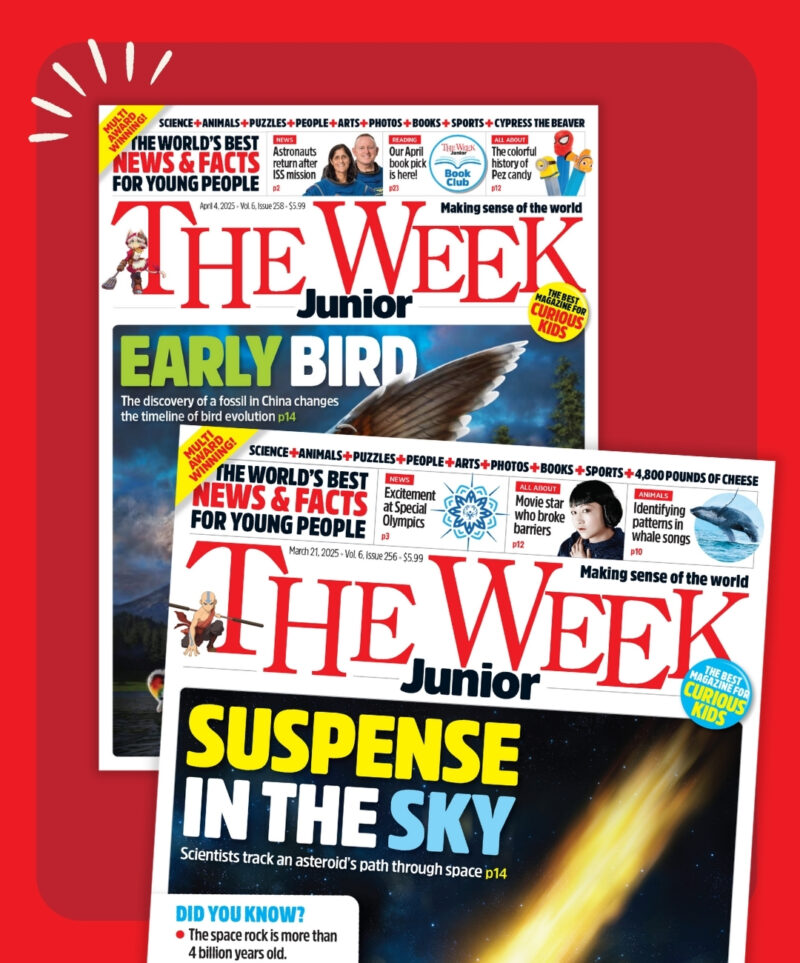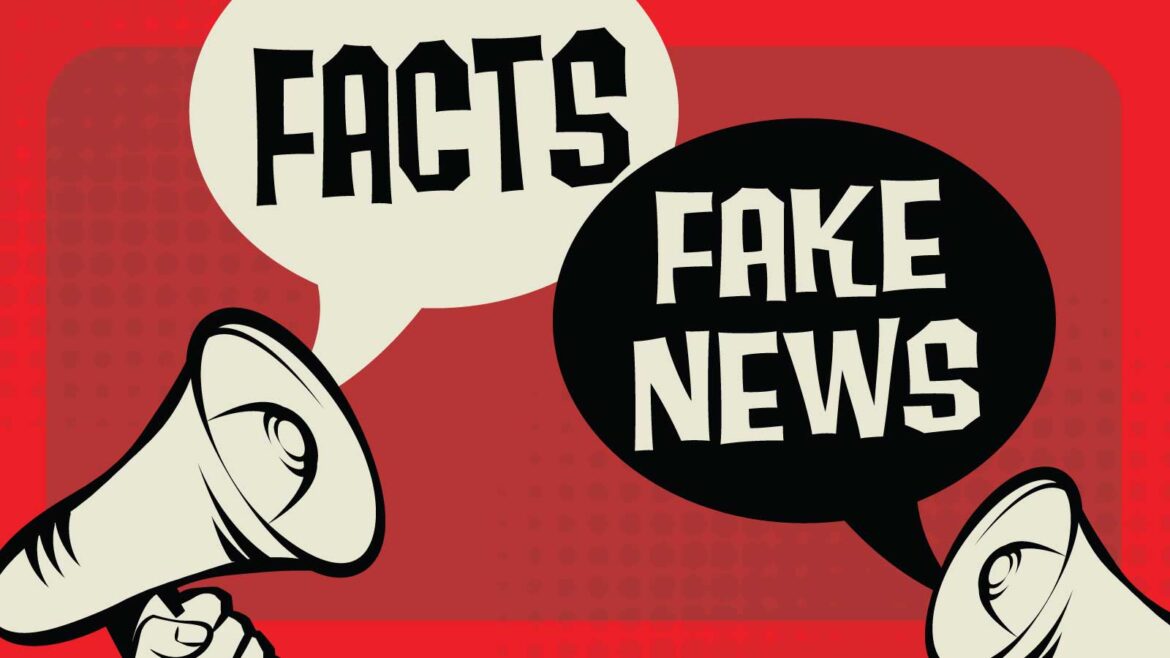We’ve all seen it: A student turns in a paper full of info from Wikipedia or TikTok, and when you ask if they checked their sources, they shrug. Today’s students live online, but few have been taught how to evaluate the information they find.
Students falling for fake news isn’t just happening in your classroom. A new report from Common Sense Media found that 72% of teens reported they’ve been misled by fake content online, and 35% shared that AI will make it harder to trust whether the information they see is accurate or not.
It’s clear that media literacy matters, not only to us but to our students. So, how can we teach students the skills to separate fact from fiction? There’s a strategy for that! (Eight, actually!). Get started with these practical, easy-to-use strategies to help students spot fake news, evaluate sources, and become more confident critical thinkers.

FEATURED PICK
Strategy 1: Use a kid-friendly news source like The Week Junior
If you want a classroom-friendly source to teach media literacy, The Week Junior is a great choice. It’s a current-events magazine made for middle schoolers, with reporting that’s clear, trustworthy, and age-appropriate. You can use it to:
- Discuss bias and word choice in a safe, developmentally appropriate way.
- Compare coverage of real news stories with less-reputable online sources.
- Practice the SIFT method with actual articles.
Strategy 2: Start with the basics—talk about what fake news actually is
Just because your students hear the term “fake news” doesn’t mean they understand what it means or how it works.
Kick off with a simple class discussion or group activity. Ask:
- What do you think fake news is?
- Have you ever believed fake news? What happened?
- What makes fake news dangerous?
- What can we do when we’re not sure if something’s true?
You can use the Merriam-Webster article on fake news to provide a historical definition and give some context. The goal here is to spark awareness. Students might be surprised by how much of their news or content consumption is shaped by things they never stop to question. To keep building students’ knowledge, we love News Literacy Project’s Daily Do Now Slides. These five-minute bell-ringers are aligned to the Framework for Teaching News Literacy and reinforce news literacy vocabulary and concepts.
Strategy 3: Try a fake fact-check activity
Want to make things real fast? Show students the spoof website All About Explorers: Christopher Columbus and ask them to look up information about him. They’ll quickly find wild claims like “Columbus was born in 1951” and realize something isn’t right.
Ask students:
- What tipped you off?
- Is this biased or just false?
- How can you tell the difference?
This opens the door to conversations about the distinction between misinformation (false information shared in error) and disinformation (false information intentionally shared). It also makes clear why fact-checking matters.
Teach students lateral reading, a strategy professional fact-checkers use to quickly spot misinformation. This student-friendly video explains how it works. We also love News Literacy Project’s Checkology, virtual lessons taught by journalists that guide students through real-world examples from social media and news sites, helping them separate fact from fiction.
Strategy 4: Teach the SIFT method
Mike Caulfield, a digital literacy expert and the author of Verified: How To Think Straight, Get Duped Less, and Make Better Decisions About What To Believe Online, teaches teachers how to introduce the SIFT method to students, and this easy four-step tool is a must-teach. Here’s how this fact-checking strategy works:
- Stop – Before you believe or share, pause. Is this source familiar? Emotional? Outrageous? That’s a signal to slow down.
- Investigate the source – Who created this? Do a quick search. Are they credible? Biased?
- Find better coverage – Look for other reputable sources reporting the same thing.
- Trace claims back to the original – Click back to the source, quote, or photo. See where it actually came from.
Post SIFT on an anchor chart in your classroom, or use it as a checklist anytime your students need to check their sources.
Strategy 5: Build up their news vocabulary
Bias. Claim. Evidence. Source. These might sound like textbook words, but helping students really understand them can transform how they consume media. Once kids can name what they’re seeing, they’re less likely to fall for what isn’t true.
Go beyond the basics and add in some newer media literacy terms, especially ones students are encountering on social media, which is where teens get most of their news.
- Algorithm – The behind-the-scenes code that decides what shows up in your feed. It’s designed to show you what you’re most likely to engage with, not necessarily what’s balanced or true.
- Clickbait – Headlines meant to grab your attention with drama or shock. Often misleading.
- Deepfake – Videos or audio clips altered with AI to show someone saying or doing something they didn’t. Super convincing—and dangerous.
- Disinformation – False content spread on purpose to deceive.
- Misinformation – Incorrect information spread by people who believe it’s true.
- Echo chamber – An environment where people only see views that reinforce their own, often thanks to algorithms.
- Generative AI – Tools like ChatGPT or image creators that generate new content, sometimes blending facts and fiction.
- Sponsored content – Ads disguised to look like real news. Teach kids to ask “Who made this and why?”
- Verification – The habit of checking to see if something is true or trustworthy.
Create a media literacy word wall so these terms are visible and easily accessible, or consider letting students build their own dictionary throughout the year.
Students are visual learners, and images are powerful. So are word choices.
Compare two headlines about the same story. Or pull up two versions of an article, and ask students to spot differences in tone, word choice, and image selection. What’s the impact?
Ask students:
- How do visuals influence how we feel?
- What words are loaded or emotional?
- Do the articles include sources or quotes?
- Are key facts missing or spun in a particular direction?
This helps them realize that journalism isn’t just about facts, it’s also about framing.
Strategy 7: Teach students the different types of fake news
Not all fake news looks the same. Help students identify:
- Satire – Meant to be funny or exaggerated, not factual (like The Onion).
- Clickbait – Attention-grabbing headlines that oversell the story.
- Hyperpartisan news – Strongly biased news that pushes one side.
- Invented news – Completely made-up news.
- AI-generated misinformation – Fake articles, photos, or even “eyewitness” accounts created with generative AI.
Make it fun: Try a fake news scavenger hunt where students hunt for one of each type of fake news and explain why it fits that category.
Strategy 8: Talk about how fake news makes money
A lot of fake news and biased content exists for one reason: profit. The more clicks, the more money.
Have students create a trailer or slideshow called “Fake News Is Big Business.” They can research ad revenue models, sponsored content, and how fake stories travel faster than true ones. It’s a great opportunity to discuss media ethics too.
Helping students learn how to separate fact from fiction is one of the most important skills we can teach them. The world of information is messy and loud. But with the right tools, kids can learn to slow down, ask smart questions, and decide for themselves what’s real, and that’s a skill they’ll use long after they leave our classrooms!


